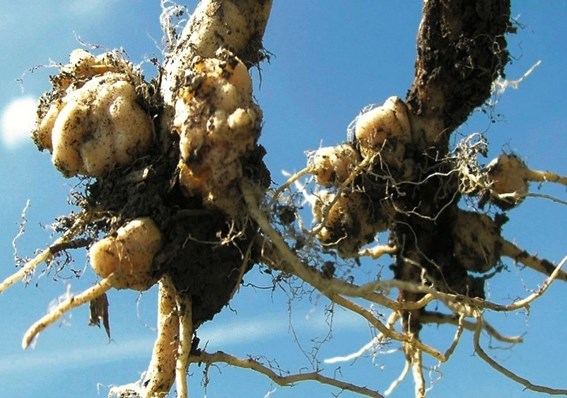Another field in the MD of Bonnyville has been positively identified for clubroot.
However, for Matt Janz, director of ag and waste for the municipality, the news isn’t surprising.
“We were expecting more positive fields, actually we were expecting multiple just by going off of the history of other municipalities. Usually what happens is in year two and three you will see multiple fields showing up, but maybe because we have been doing education for five years, trying to educate producers on how to reduce the risk of spreading clubroot, that has helped us,” he said.
Janz confirmed the positive field is located in the same area as the previous four, and that adjacent property owners have, or will be, notified.
Clubroot is a disease that affects the growth of canola. According to Janz, it came to the area a few years ago, but has been in Alberta since the early 2000s.
“It probably came into our area on a piece of equipment. A farmer might have purchased a piece of equipment from out of the area not knowing it was contaminated,” he added.
This is why the MD has made educating local producers a top priority.
For example, when a field is positively identified as infected with clubroot, they will explain to the producer how to prevent the spread of the disease.
This includes reducing travel in infected fields during wet conditions, cleaning off equipment before leaving the field, and spraying a sanitizing chemical when clubroot is present.
“When people are either purchasing a combine or toolage equipment, (they should) make sure all of the dirt is shaken off before leaving the property. Don’t bring it home and then clean it, clean it and sanitize it there,” recommended Janz.
Even dirt falling off of equipment into a nearby field can spread the disease.
Janz explained, “A spore can last in the soil for up to 20 years, but it needs a host plant to actually multiply. If it doesn’t get into a plant to do that, it will sit dormant for 20 years and then the lifespan would be gone.”
That’s how the MD knows they will always have clubroot.
In order to avoid its continued growth in a field, once a property has been positively identified with the disease, the producer can’t grow canola on their field for at least four years. This is because clubroot is specific to these types of crops.
“It’s important for people to keep infestation levels down. That’s why we put the four-year rotation in there - saying they can’t grow any canola crops within that four years. It gives the spore load time to reduce, so when they do go back to canola, there will still be clubroot there, but the spore load will be so low that it won’t hurt the crop as much,” detailed Janz.
They’re hoping that as they continue to educate local producers, the spread of clubroot will continue the downhill trend.
Janz said finding only one positive field so far is “a pretty positive indication that producers are taking the time and doing the right thing.”
“There are some municipalities who have hundreds of fields, we’re lucky enough that the spread is being reduced and kept to a small area,” he added.
For more information on how to prevent clubroot, or to find out the location of the positively identified field, call the MD office at 780-826-3171.
Janz noted, “If people want to know where it’s located, they’re more than welcome to give us a call. We changed our policy earlier in the year. If a farmer feels they need to know where the locations are, they can.”



